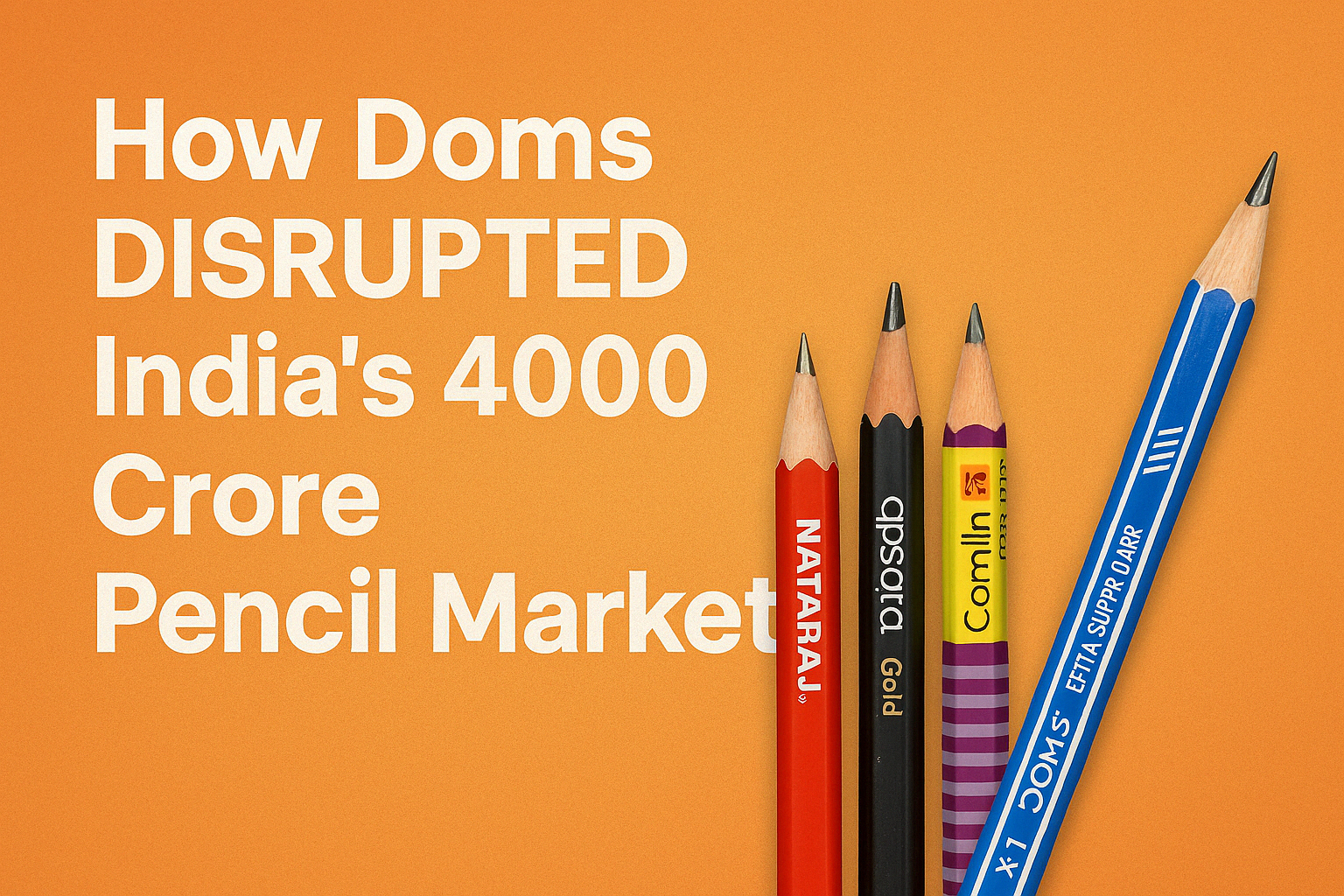Introduction
These pencils, these four pencils control 4000 crores of the Indian stationery market. Now if you zoom out and think about your school life, you remember using this, this or even this. But this brand Doms is what is bringing the new disruption in the pencil industry. It does feel a little weird to talk about a pencil brand’s growth strategy. But trust me, Doms story of taking on big incumbent companies to now owning the pencil market is fascinating.
Doms’ Rise in a Crowded Market
In today’s video, we’ll talk about how a small pencil manufacturing company from Umargam is on its way to cross 1000 crores in revenue this year. How they’ve not only cracked the stationery market, but big giants like Apsara, Nataraj and Camlin. This is a business story. Of how the smallest companies can beat crowded markets when they are customer and product focused. Let’s dig in with all our insights.
The Indian Stationery Market Landscape
Okay, coming to the Indian stationery market. See, there are four main families that control the entire industry here.
There’s Hindustan pencils, the major brands like Nataraj and Apsara, and also the largest manufacturing unit making 8 million pencils a day.
Then we have the Dandekars that control Kokuyo, Camlin. Then we have the Dhankanis who are basically an OEM manufacturing pencils for other brands.
And lastly, we have Santosh Raveshia and his family that run Doms.
Financial Trends Among Competitors
The entire stationery market of India is about 4000 crores, but pencils are a commoditised product, which is why they’ve made the big players bleed…
(continues with original transcript)
1. Focus on Product Innovation
Doms has an uncanny focus on product innovation…
(continues with original transcript)
2. Understanding the Customer Deeply
See, for any product to be bought, there are influencers and there are purchasers…
(continues with original transcript)
3. Cracking the Branding Game
As aspirations of the Indian consumer have risen, more international brands like Faber Castell and Coors have entered the market…
(continues with original transcript)
4. Robust and Transparent Distribution
Santosh Raveshia, the man heading Doms, worked with Kissan for two years to figure out what works for distribution in India…
(continues with original transcript)
5. The Power of Bundling
As is with any low average order value product, Doms understood that the real money is not in selling single pencils worth 2 rupees or 7 rupees. It’s in selling a bundle…
(continues with original transcript)
Conclusion
Doms has not just managed to survive in a highly commoditized, low-margin market—but it has thrived and disrupted it with innovation, insight, and execution. From product design to packaging, from understanding modern consumer behavior to mastering distribution, Doms has shown how focus and strategy can reshape even the most “boring” industries. As they gear up to hit 1000 crores in revenue, the company stands as a case study in modern Indian entrepreneurship.
FAQs
Q1: What is the estimated size of the Indian stationery market?
The Indian stationery market is estimated to be around ₹4000 crores.
Q2: What makes Doms’ pencils different from others?
Doms uses a graphite-polymer blend to make smoother, stronger, and blacker leads. They also offer triangle-shaped pencils for better grip.
Q3: How did Doms compete with established players like Nataraj and Camlin?
By focusing on product innovation, deep customer understanding, unique branding, efficient distribution, and bundling products to increase value.
Q4: What role did bundling play in Doms’ growth strategy?
Bundling products like art kits and gift sets allowed Doms to increase margins and average order value, emulating strategies seen in industries like fast food.
Q5: How is Doms’ brand different from its competitors?
Doms focused on creating a tactile, visually appealing experience for kids—sweet-smelling erasers, colorful triangular pencils, and brag-worthy packaging drove organic brand loyalty.










